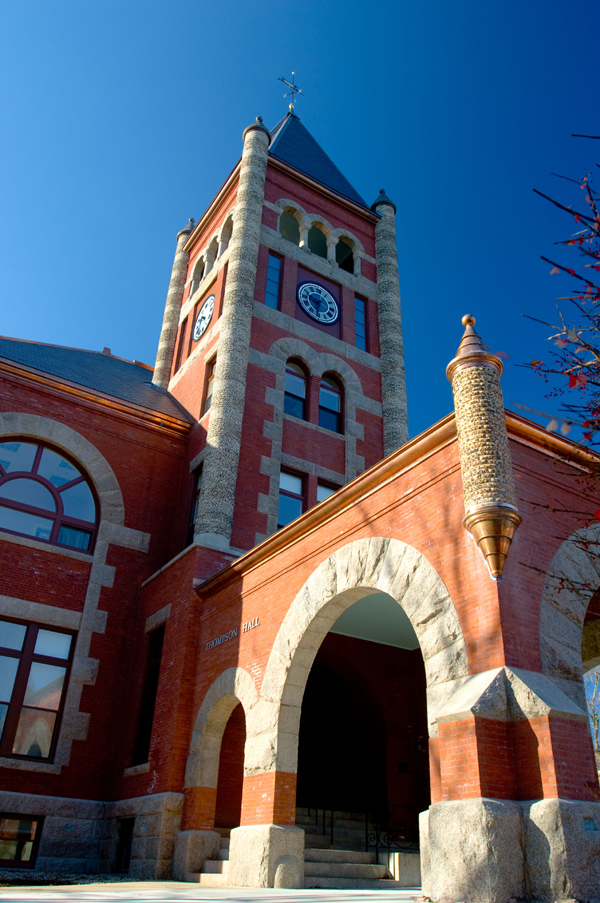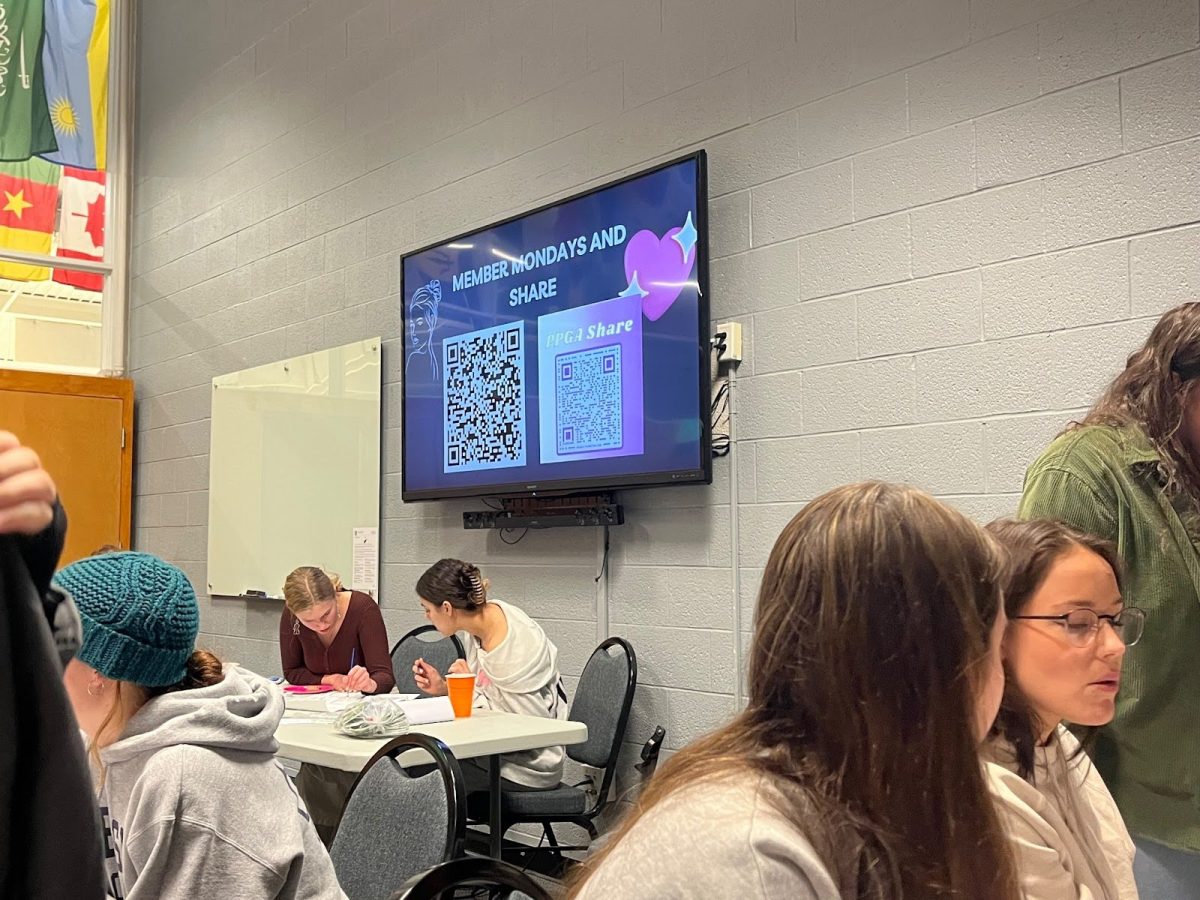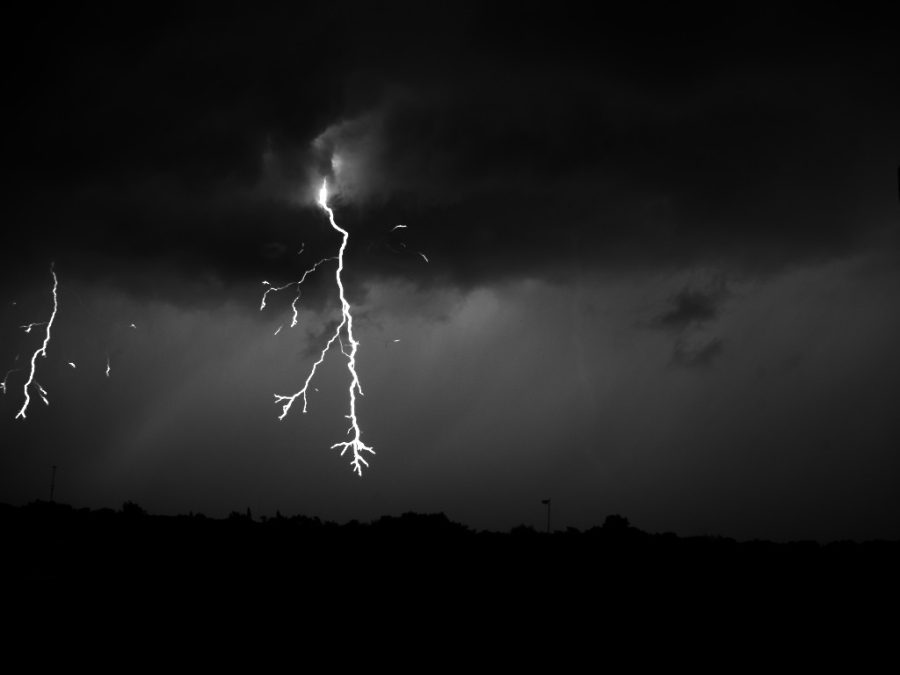Lightning is on the radio. More specifically, lightning makes the radio, or radio waves, each time it forms in response to electrical charges of atoms in the atmosphere and wanting to connect areas of positively charged and negatively charged atoms.
While scientists understand why it forms, how it forms is a different story.
Julia Tilles, a doctoral candidate in the College of Engineering and Physical Sciences, has determined one portion of the lightning formation puzzle using radio science. Earlier this month, Tilles and her fellow collaborators published a paper in the scientific journal Nature Communications describing a “fast negative breakdown.”
Fast negative breakdown contrasts a similar phenomenon called fast positive breakdown, which was studied in a paper from 2016. Fast positive and fast negative breakdown refer to the direction of an electrically conducting channel, which is made by the positively- and negatively-charged atoms wanting to connect. Electricity will move along this channel in one direction.
How this channel develops separates fast positive from fast negative breakdowns.
“If [this channel] grows…in the direction of the electricity flow, it’s called fast positive breakdown. If it’s in the opposite direction, it’s called fast negative breakdown,” Ningyu Liu, Tilles’ advisor and an author on the paper, said. Liu is also an associate professor in the Department of Physics and Astronomy and part of the Space Science Center.
Tilles and Liu discovered fast positive breakdown through radio science. Studying lightning formation poses a challenge: actually seeing the lightning. Lightning comes from within clouds, which block light and any cameras that want to photograph lightning—just like clouds blocking the sun.
Instead, since lightning produces radio waves at different frequencies, Tilles used an instrument called an interferometer to measure the radio waves. Lightning has a short lifespan, so the interferometer’s three antennas collected radio signals “every 5.5 nanoseconds,” Tilles said. The signals then show what lightning looks like.
Tilles studied lightning formation in Florida, where she worked on the base of the Kennedy Space Center, battling insects and Florida humidity in August of 2016. The Kennedy Space Center is part of the National Aeronautics and Space Administration (NASA). While NASA is best known for its space research, it also conducts extensive research on lightning. Two authors on the paper are actually part of NASA.
One of the other authors is from New Mexico Institute of Mining and Technology (New Mexico Tech), where Tilles completed her Master’s in Physics. New Mexico Tech provided the interferometer.
Tilles did not go to Florida to investigate fast negative breakdown. She was studying other electrical phenomena in lightning formation, which are related to fast positive breakdown. This was in response to the paper describing fast positive breakdown.
The paper focused on thunderstorms in New Mexico, but Florida thunderstorms have an advantage over New Mexico thunderstorms.
“The Florida thunderstorm can generate much more NBEs [storm-related electrical discharges] than New Mexico storms.” Liu said.
Why Florida thunderstorms differ is still unknown, although the answer may lie in how geography influences thunderstorm creation—the mountains of New Mexico affect clouds differently than the flat wetlands of Florida.
After an August 2016 storm, Tilles and Liu noticed that the lightning initiation they were studying had negative charges.
They didn’t expect this. Fast negative breakdown “is energetically less favorable.” Tilles said when explaining fast negative breakdown. Atoms prefer to move in ways that require the least energy, and fast negative breakdown requires more energy than fast positive breakdown. “We wouldn’t think it should happen, based on what we know from lab studies, and also from computational studies,” Tilles said.
Upon gathering these interesting results, Tilles developed computer models of lightning formation. The computer models confirmed that it was fast negative breakdown that was responsible for lightning formation.
Discovering fast negative breakdown suggests that “we still have a lot to learn about lightning in the thunderstorm,” according to Liu.
“The thunderclouds are just so much more complex…looking at dielectric breakdown [channel creation] in the lab, we’re not recreating the same situation as in a thundercloud.” Tilles said. This discovery “makes the case for getting better observations of lightning or things happening inside…it’s not obvious what’s going on in there anymore.”





















